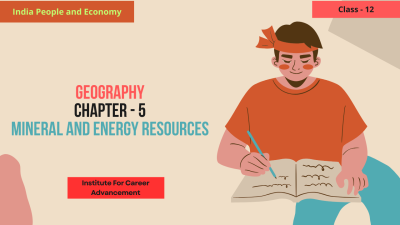Population Distribution, Density, Growth, and Composition - Class 12
Population Distribution refers to how people are spread across a region. It can be uneven due to factors like climate, terrain, resources, and economic opportunities. Population Density measures the number of people per unit area. It helps understand the population pressure on land and resources. Population Growth is the change in population size over time. It's influenced by birth rates, death rates, and migration. Population Composition analyzes the characteristics of a population, such as age, sex, occupation, and education. It helps understand the population's structure and potential challenges or opportunities. Key points: India has a large and diverse population. Population distribution is uneven, with dense areas in plains and river valleys. Population density has increased over time. Population growth rate has been declining but is still significant. Population composition is young, with a large working-age population. Understanding these aspects is crucial for effective population management and policymaking. জনসংখ্যা বন্টন বলতে বোঝায় কিভাবে মানুষ একটি অঞ্চল জুড়ে ছড়িয়ে আছে। জলবায়ু, ভূখণ্ড, সম্পদ এবং অর্থনৈতিক সুযোগের মতো কারণগুলির কারণে এটি অসম হতে পারে। জনসংখ্যার ঘনত্ব প্রতি একক এলাকায় মানুষের সংখ্যা পরিমাপ করে। এটি জমি ও সম্পদের উপর জনসংখ্যার চাপ বুঝতে সাহায্য করে। জনসংখ্যা বৃদ্ধি হল সময়ের সাথে সাথে জনসংখ্যার আকারের পরিবর্তন। এটি জন্মের হার, মৃত্যুর হার এবং অভিবাসন দ্বারা প্রভাবিত হয়। জনসংখ্যা গঠন একটি জনসংখ্যার বৈশিষ্ট্য বিশ্লেষণ করে, যেমন বয়স, লিঙ্গ, পেশা এবং শিক্ষা। এটি জনসংখ্যার কাঠামো এবং সম্ভাব্য চ্যালেঞ্জ বা সুযোগগুলি বুঝতে সহায়তা করে। মূল বিষয়গুলোঃ ভারতে একটি বিশাল এবং বৈচিত্র্যময় জনসংখ্যা রয়েছে। সমতল ও নদী উপত্যকায় ঘন এলাকা সহ জনসংখ্যার বন্টন অসম। সময়ের সঙ্গে সঙ্গে জনসংখ্যার ঘনত্ব বৃদ্ধি পেয়েছে। জনসংখ্যা বৃদ্ধির হার হ্রাস পাচ্ছে কিন্তু এখনও উল্লেখযোগ্য। জনসংখ্যার গঠন তরুণ, একটি বড় কর্মক্ষম বয়সের জনসংখ্যা সহ। কার্যকর জনসংখ্যা ব্যবস্থাপনা এবং নীতিনির্ধারণে এই দিকগুলি বোঝা অত্যন্ত গুরুত্বপূর্ণ।
English
Last updated
Wed, 27-Nov-2024



















